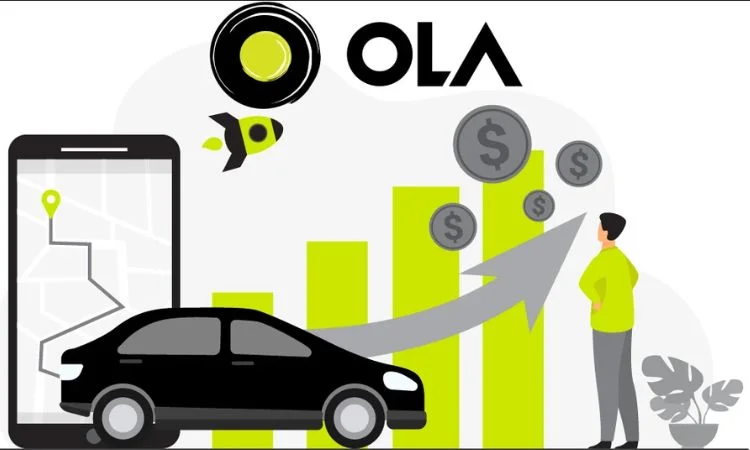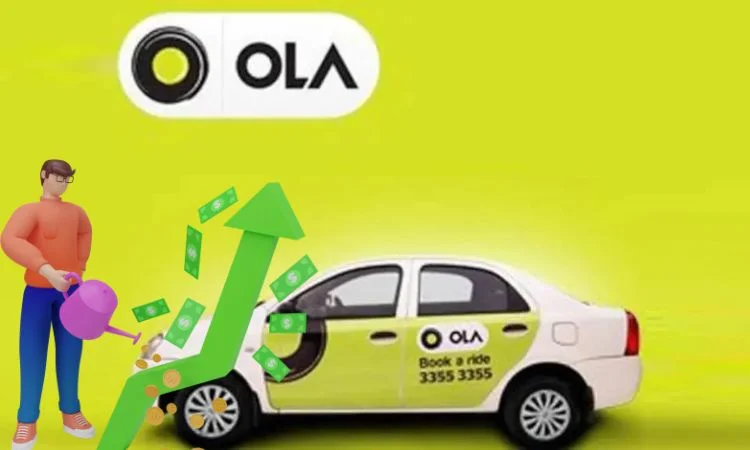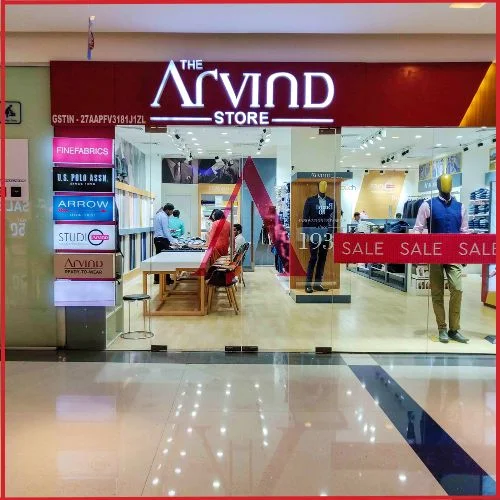Ola, an esteemed leader in the realm of transportation services, stands as the pioneering Indian cab aggregator company. Established in December 2010 by two distinguished graduates of IIT Bombay, Ola, formerly known as OlaCabs, has seamlessly transformed the landscape of cab services, offering a refined and convenient experience to its users.

Under the ownership of ANI Technologies Pvt. Ltd., Ola has excelled in bridging the gap between cab owners and commuters, earning acclaim for its operational excellence. In lieu of acquiring and leasing its own fleet, Ola has adopted a collaborative approach by partnering with a diverse array of taxi drivers and owners, integrating modern technology into its platform. This innovative strategy enables users to effortlessly book cabs on short notice through Ola’s sophisticated mobile application.
As India’s homegrown ride-hailing app, Ola commands a substantial market share, accounting for nearly 50% according to Uber’s 2020 report. With a widespread presence in over 250 cities across India, Ola boasts a network of more than 2.5 million driver-partners.
Adhering to a hyperlocal approach, Ola remains steadfast in its mission to facilitate mobility for a billion people. In alignment with this vision, Ola has diversified its services to include auto and bike bookings, demonstrating its commitment to offering comprehensive transportation solutions. Noteworthy among its initiatives is ‘Ola Pedal,’ a bicycle-sharing service introduced in 2017, aimed at enhancing last-mile connectivity.
For those intrigued by Ola’s journey, this exploration delves into the remarkable trajectory of the company, encompassing insights into its visionary founders, robust business model, revenue dynamics, expansive growth, and more.
Company Highlights
| Startup Name | Ola |
| Headquarters | Bengaluru, Karnataka, India |
| Sector | Transportation |
| Founders | Bhavish Aggarwal, Ankit Bhati |
| Founded | 2010 |
| Parent Company | ANI Technologies Pvt. Ltd. |
| Website | olacabs.com |
Ola: Streamlining Transportation with Comprehensive Services
Ola has redefined the landscape of cab booking, providing a streamlined and efficient process for travelers. From convenient payment options to in-ride entertainment through ‘Ola Play,’ the platform ensures a seamless and enjoyable journey. In addition to traditional cab services, Ola now extends its offerings to include self-drive cars, catering to diverse preferences and needs.
Service Variety:
Whether opting for self-drive or cab-hailing, Ola Cabs presents an extensive array of vehicle choices, accommodating varying numbers of passengers, budgets, and preferences. For intra-city travel, passengers can avail themselves of shared taxis, autos, bikes, and even e-rickshaws through the Ola platform.
Specialized Services:
Ola goes beyond standard cab services with specialized offerings such as ‘Ola Outstation’ for inter-city travel and ‘Ola Rentals’ for renting a cab on an hourly basis. The introduction of ‘Ola Select,’ a subscription-based membership program, provides riders with exclusive benefits, enhancing the overall Ola experience. Additionally, the widely successful ‘Ola Pedal’ bicycle-sharing service has gained popularity on esteemed campuses such as IIT Kanpur and IIT Madras, boasting a fleet of over 500 cycles.
Corporate Solutions:
In 2016, Ola introduced ‘Ola Corporate,’ a tailored solution for businesses. By utilizing Ola Corporate, employees can book rides with ease, and expenses are seamlessly deducted from the company’s preloaded account. This innovative approach not only facilitates efficient corporate travel management but also ensures the safety of employees.
Industry Landscape:
The taxi-hailing market in India is a thriving sector valued at over $40 Billion, poised to grow at a CAGR of 6.3% between 2022-2024. This growth is attributed to evolving traveler lifestyles and the increasing disposable incomes of consumers, particularly in Tier-I and Tier-II cities. Ola stands as a key player in this dynamic market, continuously innovating to meet the evolving needs of the modern traveler.
Ola – Inception Chronicle | Unveiling the Genesis of Ola
Ola, inaugurated on the 3rd of December 2010, boasts a compelling narrative surrounding its inception. Bhavish Aggarwal, the visionary proprietor hailing from Ludhiana, embodied the quintessential spirit of an ambitious entrepreneur. Prior to Ola, Aggarwal initiated his entrepreneurial journey with the creation of Olatrip.com, an online platform specializing in curated holiday packages and weekend getaways.
In the course of sustaining his venture in holiday and tour planning, Bhavish found himself undertaking a journey from Bangalore to Bandipur. Opting for a rented car, the experience proved to be nothing short of calamitous. The assigned driver, with little regard for professionalism, halted the vehicle midway, insisting on a renegotiation of the agreed-upon fare. Upon refusal, the driver proceeded to abandon Bhavish en route to his intended destination. This unfortunate encounter served as the catalyst for Bhavish Aggarwal’s transformative vision, ultimately leading to the birth of Ola.
In a pivotal moment of reflection, Bhavish recognized the shared challenges faced by numerous customers nationwide in their quest for reliable cab services. Perceiving the potential for an exceptional cab booking service, he strategically redefined Olatrip.com’s business model, laying the foundation for what we now recognize as Ola Cabs.
To fortify the venture, Bhavish enlisted Ankit Bhati as his co-founder to steer Ola Cabs toward greater success. Initially met with resistance from his parents, who were disapproving of his pursuit of a career as a ‘travel agent,’ Bhavish persevered. Their skepticism dissolved into support when OLA secured its inaugural round of angel investment from notable figures such as Snapdeal founder Kunal Bahl, Rehan Yar Khan, and Anupam Mittal.
Bhavish emphasizes the significance of not just having a promising business idea, but also the necessity of implementing it with a scalable model. In his perspective, a prudent and secure approach involves running a business with “zero” inventory, allowing for adaptability and sustained growth.
Ola – Business Model and Revenue Model

Ola employs a straightforward business model, functioning as a facilitator for cab-booking services. Through the user-friendly app, customers can seamlessly book their rides. It is important to note that Ola does not own any of the vehicles utilized in its services. Instead, the platform collaborates with drivers who possess valid permits, duly authorized and verified by transport authorities. These drivers may operate as self-employed individuals or work for operators who own multiple vehicles.
Upon successful registration with Ola, drivers gain access to a specialized mobile app designed for their convenience. However, this access is granted only after a comprehensive authentication process, which includes a thorough examination of commercial and personal documents submitted by both the driver and the associated operator. This stringent verification process ensures the authenticity and reliability of all parties involved.
Drivers enjoy the flexibility to determine their own working hours by logging into the Ola application at their convenience. They have the option to remain offline from the system whenever necessary. Ola implements a commission structure, with an average rate of 15% applied to all bookings made through the app. This commission helps sustain the platform’s operations while providing a reliable and efficient service to both drivers and customers alike.
Ola considers the following factors to create the final bill for the user:
| Fare Component | Description |
| Base Fare | Charged flat |
| Distance Fare | Charged kilometer-wise (varies by city) |
| Ride Time Fare | Charged based on the time taken to travel |
| Peak Pricing | Direct ratio depending on the demand for cabs |
| Service Tax | 5.6% |
| Swachh Bharat Tax | 0.2% |
| Toll Charges | Toll collection if you cross toll junctions during the journey |
Ola’s Funding, Investors, and Valuation Overview

Ola, a prominent player in the mobility sector, has successfully secured a substantial total funding of approximately $5 billion through a series of 29 funding rounds, encompassing both equity and debt financing, along with participation in the secondary market. Notably, the latest injection of capital occurred on December 8, 2021, when Ola secured $139 million in funding from Edelweiss and other strategic investors.
Following this milestone, another significant funding round transpired on February 22, 2022, featuring prominent investors such as Axis Growth Avenues AIF and Arrow Multi-Asset Fund. This funding event marked the continuation of Ola’s financial growth strategy.
The most recent Series J funding further solidified Ola’s financial standing. This funding round was initiated subsequent to Ola’s approval for the allotment of 66,268 Series J1 preference shares, each priced at Rs 22,635. The regulatory filings of the company indicate that this move enabled Ola to raise Rs 150 crore.
| Date | Stage | Amount | Investors/Shareholders |
| February 22, 2022 | Series J | $20.11 million | Arrow Capital, Axis Growth Avenues and more |
| December 16, 2021 | TLB Round | $500 million | – |
| December 8, 2021 | Series J | $139 million | Edelweiss and others |
| July 9, 2021 | Pre-IPO Round | $500 million | Temasek, Warburg Pincus’s Plum Wood and Bhavish Aggarwal |
| September 2019 | Series J | $5.1 Million | ARK Ola Pre IPO Private Investment Trust |
| July 2019 | Series J | $11.4 Million | Deshe Holdings, DIG Investment |
| March 2019 | Corporate Round | $300 Million | Hyundai Motor Co.& Kia Motors Corp |
| February 2019 | Series J | $92 Million | Sachin Bansal |
| February 2019 | Series J | $14 Million | – |
| January 2019 | Series J | $88 Million | Steadview Capital |
| January 2019 | Corporate Round | $1.8 Million | Eternal Yield International |
| September 2018 | Series I | $50 Million | China Eurasian Economic Cooperation Fund, Sailing Capital |
| August 2018 | Secondary Market | $225 Million | Temasek Holdings |
| October 2017 | Series G | $1.1 Billion | Tencents Holdings and SoftBank Group |
| August 2017 | Private Equity | $36 Million | Tekne Capital |
| May 2017 | Private Equity | $104 Million | RNT Capital Advisors and Falcon Edge Capital |
| April 2017 | Series G | $260 Million | SoftBank Capital |
| February 2017 | – | $330 Million | SoftBank |
| November 2015 | Series F | $500 Million | Baillie Gifford, Falcon Edge Capital, Tiger Global, SoftBank Group, and DST Global |
| April 2015 | Series E | $403 Million | DST Global, GIC, Softbank, and Falcon Edge Capital |
| October 2014 | Series D | $210 Million | SoftBank Group, Tiger Global, and Matrix Partners India |
| July 2014 | Series C | $41 Million | Steadview Capital and Sequoia Capital |
| November 2013 | Series B | $20 Million | Matrix Partners, Tiger Global Management |
| April 2012 | Series A | $5 Million | Tiger Global Management |
| April 2011 | Angel | $330K | Kunal Bahl, Anupam Mittal, Rehan yar Khan |
Ola – Driving Growth and Revenue
Founded in 2010 by entrepreneurs Bhavish and Ankit, Ola emerged as a solution to a significant transportation challenge in Mumbai. Recognizing the prevalent issue of idle cabs and exorbitant charges regardless of distance, the founders envisioned a transformative approach to address these issues. In the early stages, poor service quality and delays were unfortunately considered the norm.
By 2011, Ola’s innovative model gained traction, enabling the platform to achieve 10 daily bookings. The turning point came in October 2015 when Ola reached an impressive milestone of 700,000 daily rides. This remarkable growth underscored the company’s commitment to revolutionizing the urban transportation landscape.
Considering the challenges faced by cab operators, Ola briefly considered implementing tracking devices in each cab in January 2012 but decided against it. The strategic decision-making process demonstrated the company’s thoughtful approach to technological solutions.
In April 2012, Ola embarked on a strategic expansion, spreading its operations to Bangalore and Delhi. This expansion marked a pivotal moment in Ola’s journey, solidifying its position as a key player in the transportation sector.
Ola : Success Factor
Ola, one of the leading ride-hailing platforms in India, has achieved notable success, and several key factors contribute to its accomplishments.
Here’s an analysis of some of the key success factors
- Strong Leadership:
- Bhavish Aggarwal (CEO and Co-founder): Bhavish Aggarwal has played a crucial role in Ola’s success. His visionary leadership and strategic decision-making have steered the company through challenges and positioned it as a dominant player in the ride-hailing industry.
- Customer Focus:
- User-Centric Approach: Ola has consistently prioritized customer needs, providing a convenient and reliable platform for users to book rides. Understanding the local market dynamics and tailoring services to meet the unique demands of Indian consumers has been instrumental in building a large and loyal customer base.
- Technological Innovation:
- App Features: Ola’s mobile app offers user-friendly features such as multiple payment options, real-time tracking, and ride-sharing capabilities. Continuous improvements and updates to the app enhance the overall user experience.
- AI and Data Analytics: Ola has employed artificial intelligence and data analytics to optimize operations, predict demand, and improve efficiency. This technological integration contributes to better matching of drivers and passengers, reducing wait times, and improving overall service quality.
- Strategic Partnerships:
- Collaboration with Government: Ola has strategically collaborated with local governments and regulatory bodies, navigating the complex regulatory landscape in various regions. This approach has helped build trust and fostered a positive relationship with authorities.
- Global and Local Partnerships: Ola has formed strategic partnerships with global players such as Uber (in India) and local businesses for services like Ola Auto and Ola Bike. These partnerships have expanded Ola’s service offerings and increased its market presence.
- Market Expansion and Diversification:
- Geographical Expansion: Ola has expanded its services beyond major cities, reaching smaller towns and rural areas. This broad geographical coverage has allowed the company to tap into diverse customer segments.
- Service Diversification: Ola has diversified its services beyond traditional ride-hailing, introducing Ola Auto, Ola Bike, and Ola Rentals. This diversification caters to different transportation needs and enhances the company’s revenue streams.
Ola: Early Challenges
Resistance from Traditional Taxi Operators:
Unorganized Sector: The taxi industry in India was largely unorganized, consisting of individual taxi operators and auto-rickshaw drivers. The introduction of a centralized, app-based platform like Ola disrupted the existing business model, leading to resistance from traditional operators who perceived it as a threat to their livelihoods.
Lack of Awareness and Technological Adoption:
Limited Smartphone Penetration: In 2010, smartphone penetration in India was relatively low. This posed a challenge for Ola, as its business model relied heavily on users having smartphones to access the app. Additionally, there was a general lack of awareness about the concept of app-based ride-hailing services.
Ola’s Strategies to Overcome Challenges:
Building Awareness and Educating Users:
Marketing Campaigns: Ola invested in extensive marketing campaigns to create awareness about its service and educate potential users about the convenience and safety benefits of using the app.
Promotional Offers: To encourage adoption, Ola introduced promotional offers and discounts to attract first-time users, making the service more appealing and competitive compared to traditional options.
Conclusion
Ola’s success story is a testament to the transformative power of visionary leadership, innovative business models, and adaptability in the face of challenges. From its inception in 2010, Ola, founded by Bhavish Aggarwal and Ankit Bhati, has evolved into a global leader in transportation services.
Ola’s journey from a startup addressing a specific transportation challenge to a global triumph in the transportation sector is a compelling narrative of resilience, innovation, and strategic decision-making. As Ola continues to navigate the dynamic landscape of the mobility sector, its commitment to offering comprehensive, convenient, and innovative transportation solutions remains at the forefront of its success.















